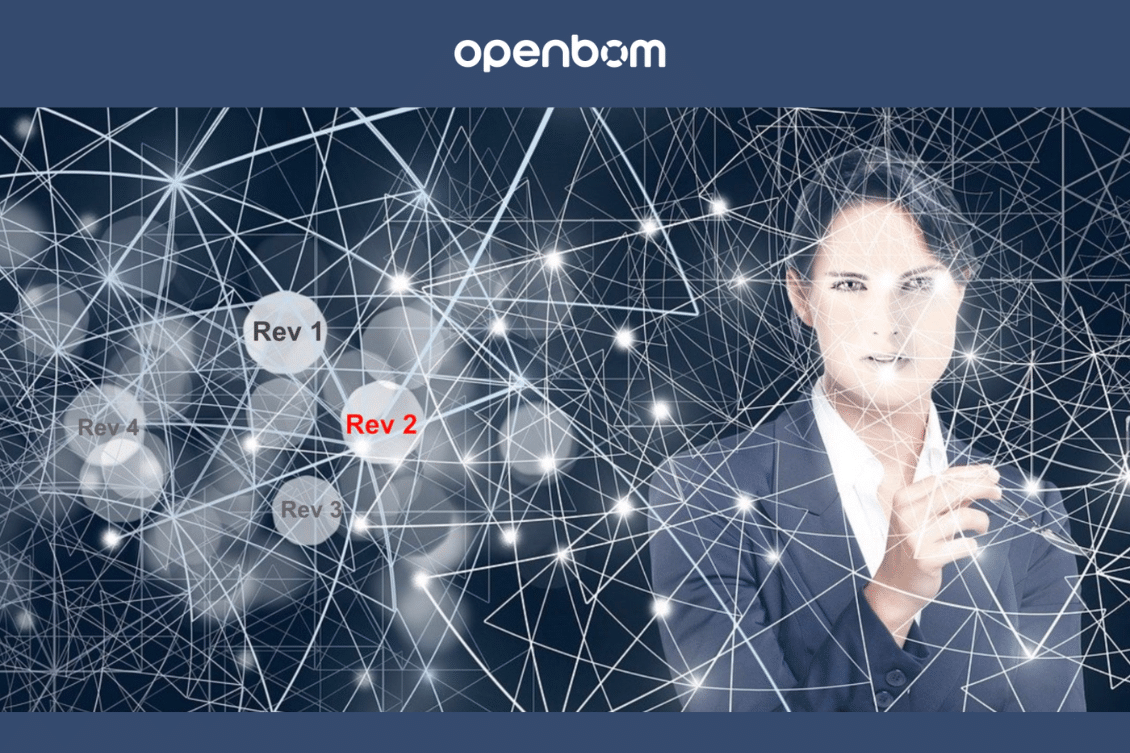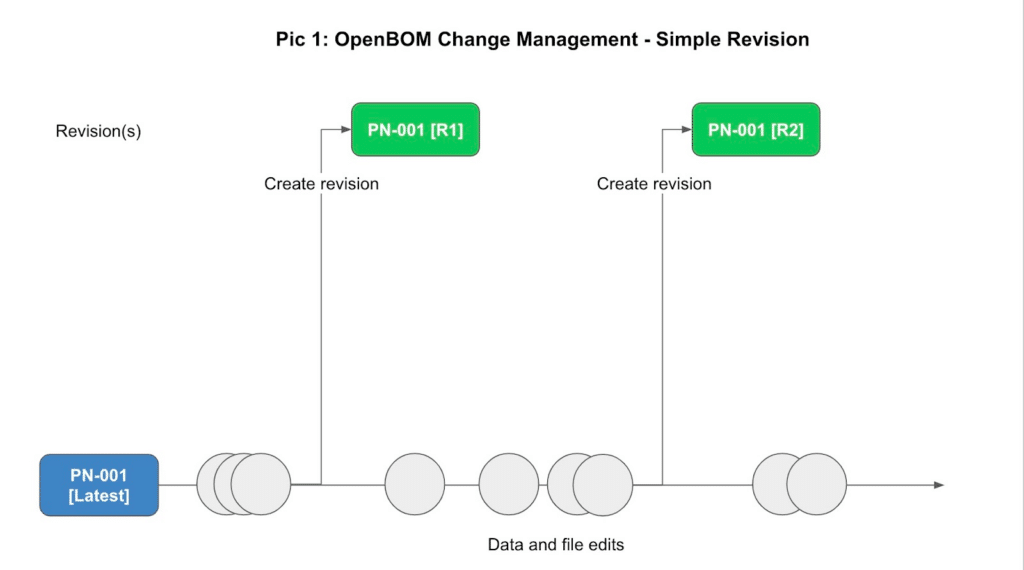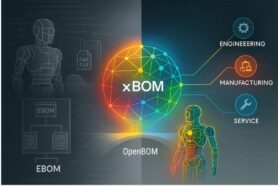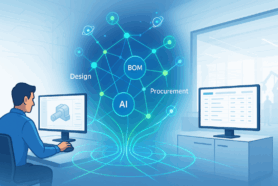
Change management is a critical aspect of any product development process. It involves tracking and managing changes to the product or project, ensuring that stakeholders are informed and that the changes are implemented effectively. In OpenBOM, change management can be broken down into four main activities: automatic change tracking, item revisions, change requests, and change orders. Let’s talk about each of these separately.
Automatic change tracking
This is the simplest thing and it is happening automatically. Whatever you enter into OpenBOM with items (catalogs) or BOMs is automatically captured and preserved in the history of changes. OpenBOM will track who changed what and when and will allow you to access this full history infinitely.
Item Revisions
Item revisions are the most basic form of change management in OpenBOM. They are used to capture an item data snapshot (including BOM) and provide you with a baseline saved in time. If the item has attachments (saved in reference property types), all these attachment files will be preserved together with the Item revision.
To make an item revision in OpenBOM, users can simply open a catalog or BOM and use the “Create / Save Revision command”. Keep in mind, your administrator should be switching change management Off to give you access. The revision mechanism is also configured by default in any account.
The following picture gives you an idea of how it works. You can see two revisions (R1 and R2) created for the same item over time.

Change Requests (CR)
The difference between revision and change requests is all about control and approval. In case you don’t want to allow anyone to create revisions whenever they want, you can put a roadblock with the approval-change request. Once, a change request has been approved the revision is created.
Keep in mind that, the change request is not changing the way the result (revision) will be saved, it has an impact on the process. The idea of a change request is to create a candidate for a revision that will be reviewed and approved. Once approved, the revision will be created.

To create a change request you need to ask the admin to enable change management processes and then a “change request” command will replace the “save/create revision” command. If the change request (CR) is not approved then all data about the revision candidate will be dissolved.
Change Orders (CO)
The most complex form of making changes – Change Orders allows you to group one or more change requests and get them approved in a single command. Usually, they are more formal processes, more people can contribute multiple change requests (CRs) to a specific change order and, once approved, all CRs will be transformed (automatically) in the revisions.

Change orders can be created together with CR (change requests). You can create a change order to hold a single change request or can combine them together.
Conclusion
Change management is an essential component of any product development process. In OpenBOM, revisions, change requests, and change orders provide a comprehensive framework for managing changes to products and projects. In my next blog, I will share videos demonstrating each of these processes. By using these tools effectively, teams can ensure that changes are implemented efficiently, and stakeholders are informed every step of the way.
In my next article, I’ll come with videos and examples of how to manage these processes.
REGISTER FOR FREE and start a 14-day trial to check how OpenBOM can help you today.
Best, Oleg
Join our newsletter to receive a weekly portion of news, articles, and tips about OpenBOM and our community.










